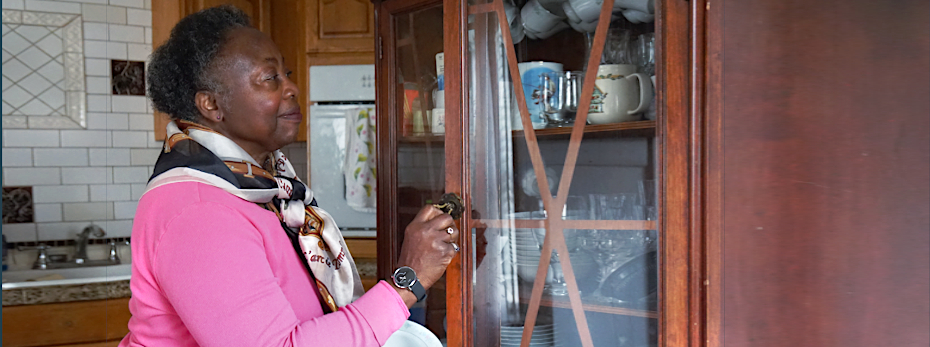Life Lab (Digital Technology Core)
Using technology to observe and learn how older adults age at home

The Digital Technology Core (DTC) of the Layton Aging and Alzheimer’s Disease Research Center maintains the Oregon Life Lab. What began as one of ORCATECH's first research initiatives has evolved into a "living laboratory" with hundreds of volunteers. The Life Lab offers:
- A way to observe how older adults age over time at home
- A testing ground for new technologies
- A dementia-specific, research cohort that is ready to test new hypotheses
The Life Lab uses a diverse lineup of digital sensors and devices installed in volunteers' homes to collect data about everyday activities, such as walking, sleeping habits, or medication taking. Some of these technologies could later become part of the ORCATECH technology platform or be part of other studies.
Trained scientists evaluate the data about behavioral activity. This process has the potential to paint a more objective picture of how someone ages at home, or “ages in place”. Having a clearer picture can help older adults plan for their future needs and help them continue living healthy and independent lives.
Director of the DTC (Life Lab)
How to enroll
Volunteer for the Life Lab study
- Be at least 62 years old
- Live independently or with a partner
What does participating in the Life Lab look like?
- ORCATECH tech assistants will come to your home and install a network of sensors and smart devices.
- New devices or sensors might be added to your home after the initial install
- Once everything is installed, you'll simply be asked to go about your daily routines
- Undergo yearly memory testing conducted virtually or at your home by one of our researchers
- Complete quick weekly questionnaires about your health (approx. 30 minutes to complete)
Research collaboration
Partner with our team on a future research project
What are the aims of the Digital Technology Core?
- Maintain and make available for research, an OADRC dementia-specific focused Life Laboratory cohort of research volunteers (healthy controls, MCI, and those with AD) who will have deployed in their homes, state-of-the-art sensing and pervasive computing platforms.
- Obtain and make available for research, digital biomarker (DB) data on OADRC subjects.
- Foster collaborative research involving DB and related technologies.
To use our data in a future research project or publication, please fill out our data request form.
Improving healthcare
The Life Lab has the potential of improving how clinics and hospitals care for older adults. Using a more objective picture of how a patient lives, clinicians can spend less time analyzing patient self-reports and more time creating a customized healthcare plan.
The Life Lab can detect changes in a person's lifestyle, including:
- Walking speed, which could predict a fall
- Amount of time someone spends outside their home, which can indicate their cognitive and physical wellbeing
- Medication taking habits, which can indicate various memory issues
- Sleeping patterns, which can indicate various healthcare issues
Predicting a fall
When Will My Patient Fall? Sensor-Based In-Home Walking Speed Identifies Future Falls in Older Adults
Read the article
Time spent outside the home
Time Out-of-Home and Cognitive, Physical, and Emotional Wellbeing of Older Adults
Read the article
Medication taking habits
Subtle Changes in Medication-taking Are Associated With Incident Mild Cognitive Impairment
Read the article
Driving patterns
Passive Assessment of Routine Driving with Unobtrusive Sensors
Read the article
Computer use
Passively-Measured Routine Home Computer Activity and Application Use Can Detect Mild Cognitive Impairment and Correlate with Important Cognitive Functions in Older Adulthood
Read the article
To learn more about:
- How the technology platform works
- What data it captures
- The devices within the technology platform